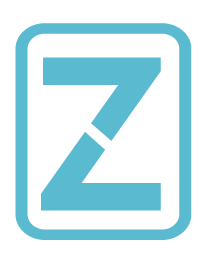
reader comments
71 with 50 posters participating, including story author
-
I do…
-
I am…
-
Oh shoot, what was my password again?
-
It is…
-
You can link your Nintendo Account at any point, not just during setup
-
This sounds really convenient until you read the second sentence.
-
Tag yourself, I’m the Arwing.
-
If you don’t already have Nintendo Switch Online, you’ll get an ad for it during setup.
-
Don’t let Baby Bowser play Doom. It’ll scar him for life.
-
Who doesn’t love checkmarks.
-
Right out of the box, that 32GB of system memory is not 100% usable.
-
You can transfer cloud save data files over manually if you have a Nintendo Switch Online account, or you can let the system manage it.
With the launch of the Switch Lite this week, a lot of families are going to be adding a second, more portable Switch to their household. This is definitely doable, but there are some important caveats to keep in mind, especially if you purchase downloadable games from the eShop.
To help clarify the whole process, here’s a quick run-down of how juggling software and accounts between multiple Switch units works in practice.
Setup and save data transfer
When you first turn on your second Switch, you’re offered the opportunity to import your account and user data created on another Switch. The system will ask if you currently have the Switch from which you want to import data and if you’ll be keeping that original system going forward.
Presuming the answer to both questions is yes, the system will ask you to link the new system to your existing Nintendo account. If that account isn’t linked on the original system, you’ll have the opportunity to do so before continuing. You can also create a new user on the system and link it to a Nintendo Account later.
At this point, Nintendo offers the ability to wirelessly transfer user information and save data from the original Switch to the new system. This seems pretty handy until you discover that “the transferred user and save data will be deleted from the source console.” That’s not ideal unless you plan on getting rid of the original console.
To copy your save data over while keeping it intact on the source console, you can’t just pop out the SD card and copy the files over (that will just earn you a warning saying the SD card is tied to another console and that it will need to be formatted to work on a new one). Instead, you’ll need to sign up for the Nintendo Switch Online service, which includes the ability to transfer cloud saves.
If you only want to perform this transfer once, you can just buy a one-month, $4 subscription and cancel it after you’re done. If you want to juggle save data between the systems in perpetuity, though, you’re better off with the $20 annual subscription (or a $35 family membership if you’re sharing with people using different Nintendo Accounts). That system is pretty seamless—I was able to start a game of Into the Breach on one Switch and start it at the same point on another Switch minutes later without any manual work.
It’s pretty frustrating to have to pay Nintendo and use its server resources for the privilege of simply transferring save data between two Switch consoles. That said, the Nintendo Switch Online service isn’t too cost-prohibitive, and it comes with access to online gameplay and a growing selection of classic NES and SNES titles for download.
Share and share alike
-
Congratulations! It’s a bouncing, baby gaming console!
-
A nice tricolor gaming salad.
-
If Switch players can get the d-pad back, maybe iPhone users can get the headphone jack back one of these days?
-
The controls may look a bit bigger, but it’s just an optical illusion created by the smaller system housing.
-
Compare and contrast the directional inputs, but also note how much less “wasted” space there is on the bottom of the control area.
-
The shoulder buttons have not been shrunk or squeezed in any way, and reaching them feels a bit more natural thanks to the Lite’s shorter height.
-
Both systems have USB-C ports on the bottom, but only one lets you connect to a TV display…
-
While it’s much smaller in other dimensions, the Switch Lite is not significantly thinner than the original.
-
Check out the redesigned cooling grates as you compare and contrast the sizes.
-
Dude, where’s my kickstand?
-
A new SD card slot replaces the opening that used to be behind the kickstand.
-
Down in front!
-
The higher PPI supposedly makes the image on the bottom a tad sharper than the one on the top, but we couldn’t see much difference.
If you enjoy your Switch games on physical cards, sharing them between systems is pretty straightforward. Just pop the card out of one system and pop it in to the other.
If you download your Switch games from the eShop, things are a bit trickier. The good news is that those games are tied to your Nintendo Account, and you’ll be able to redownload them on the new system as long as it’s linked to the same account. The bad news is you have to perform this process manually, starting each download individually from a list on your Account Information page on the eShop. We hope you have a lot of time and/or bandwidth to spare for this cumbersome process.
By default, your new Switch will be designated as a “secondary” console on your Nintendo account, which imposes some important restrictions on how it can access your downloaded game library. For one, every time a secondary console starts a new game, it needs to connect to Nintendo’s servers to “[check] if the software can be played.” If you don’t have an active Internet connection handy at any moment, those digital games are functionally useless on the secondary system.
There is one small workaround to this issue. If you start a game on a secondary console when there’s Wi-Fi available, you can continue playing it even if you go somewhere without an Internet connection. This wrinkle seems to work even if you put the system into “Airplane mode” or if you turn off the screen for “Sleep mode” and resume play later in a different, Internet-free location. Be warned, though: If you close the game and try to start another, you’ll be required to perform the Internet check-in again (and if you turn the Switch off completely or drain the battery, you’re out of luck).
This online check-in is not required on the “primary” console for a Nintendo account. Any user on that system will be able to play games downloaded to that console without a server check-in. So if you have one “on the go” Switch that’s going to be played away from Wi-Fi and another that is usually staying at home, you’ll probably want to make your portable system the “primary” one on your Nintendo account. To do that, you have to deregister the primary system via the eShop or the Nintendo Account website, then register the other system as “primary” through the eShop.
Nintendo also imposes limits on how many systems can access a single downloaded library from a single Nintendo account at the same time. So if I’m playing a downloaded copy of Super Mario Odyssey on a secondary console and someone else starts a downloaded copy of Zelda: Breath of the Wild on the primary console using the same Nintendo Account, an error message will appear on the secondary console: “Play is being suspended. Downloaded software or downloadable content may be being played on another console using the same Nintendo Account.”
There is a way around this in some cases. If you put the primary console into “Airplane mode” before starting a game, it won’t be able to check in with Nintendo’s servers to put a “lock” on your library (but you will still be able to play the game without an online check-in). This method only works for offline single-player games, though; if you want to use any online features on the primary console, you can’t use this trick.
This method also works in reverse. You can start a game on the secondary console, turn on Airplane mode, then start a different downloaded game on the primary console without causing issues. If you try to change games on the secondary console, though, it will require another online check-in that could screw things up.
So if you want to play an online game of Mario Kart 8 Deluxe or Super Smash Bros. Ultimate across both of your Switch consoles, your options are pretty limited. You can start a new Nintendo account for one of the consoles, but you’ll have to repurchase any games you want separately for that account. You can also buy physical game card copies of specific games that you don’t want to trigger the online check.
We’ve tried to make this whole confusing mess as clear as possible here, but we’re sure there will still be questions and edge cases we haven’t addressed. Feel free to leave them in the comments, and we’ll do our best to help you out.


